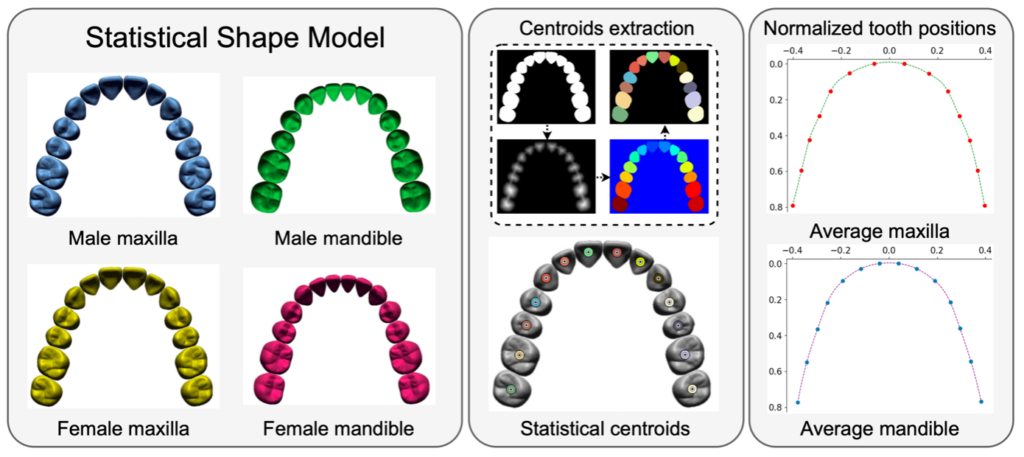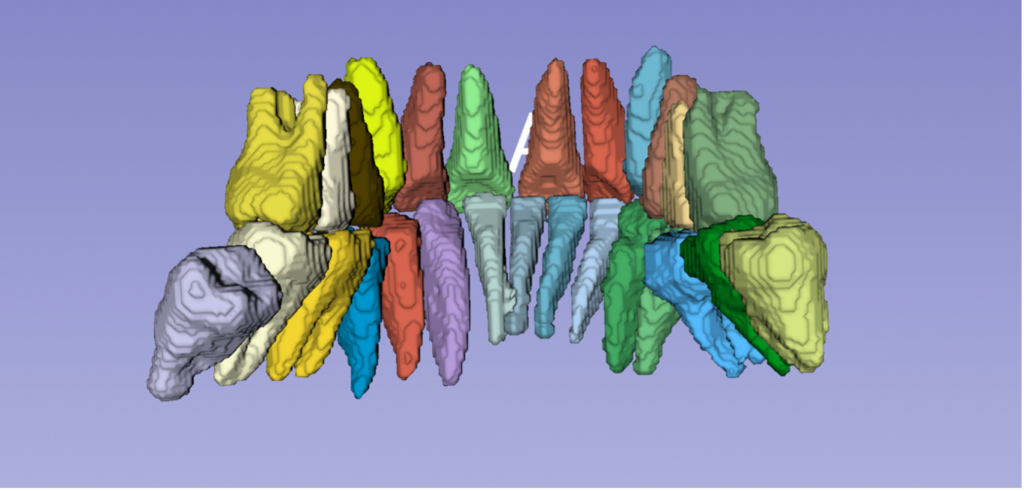Tomasz Szczepański
Accurate segmentation of individual teeth from Cone-Beam Computed Tomography (CBCT) scans is essential for orthodontic treatment planning. Segmentation of teeth from CBCT images helps with digital implant planning, assessing the quality of diagnoses, designing surgical guides, and constructing orthodontic setups. Manual segmentation is time-consuming and requires specialized software, making automatic segmentation methods highly desirable. Segmentation is a crucial step that opens the door to an in-depth examination and analysis of the patient’s condition. High segmentation precision is necessary to develop reliable tools and models to support the orthodontist. Assessing the accuracy of tooth segmentation is challenging, and conventional metrics are not always applicable due to the complex root shapes. Our research focuses on improving the quality of segmentation and the reliable evaluation of the results obtained. One of the approaches we seek to improve the quality of segmentation is using statistical geometry of tooth morphology.

Figure: Based on the statistical shape model of normal dentition, we find tooth centroids, the basis for determining the statistical tooth positions.

Figure: 3D visualization of the segmented tooth.

